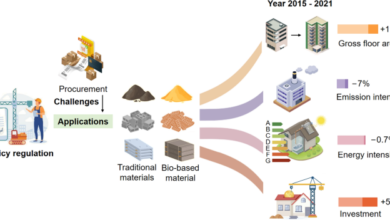Warranty Management Software: Protect Your Products and Brand

You need to protect your products and brand, and Warranty Management Software can be a game-changer in that endeavor. By automating warranty tracking and offering valuable insights through analytics, you can streamline processes and enhance customer satisfaction. Imagine reducing operational costs while simultaneously strengthening your brand image—sounds ideal, right? But what should you look for in such a software, and how can you implement it successfully to reap maximum benefits? The answers to these questions might surprise you and could redefine your strategy moving forward.
Benefits of Warranty Management Software
Imagine a scenario where managing product warranties feels like navigating a labyrinth; this is where warranty management software steps in to simplify the process. You’ll find that it transforms a complex task into a streamlined operation, offering numerous benefits.
One major advantage is the use of data analytics. By leveraging data analytics, you can gain insightful information about warranty claims, product performance, and customer behavior. This data helps you make informed decisions, identify trends, and improve your products and services.
Additionally, warranty management software employs automated processes to handle repetitive tasks. Automation reduces human error, speeds up claim processing, and ensures consistency. For instance, automated processes can validate claims, update records, and generate reports without manual intervention. This efficiency not only saves time but also enhances customer satisfaction by providing faster resolutions.
Moreover, the software centralizes all warranty-related information, making it easily accessible for your team. This centralized approach ensures that everyone is on the same page, leading to better communication and coordination.
Key Features to Look For
Understanding the benefits of warranty management software sets the stage for recognizing the key features that make such a system indispensable. First, look for automation efficiencies. These streamline your processes, reduce manual errors, and save time. Automated claim processing, for instance, ensures that valid claims are approved quickly, enhancing customer satisfaction and reducing delays.
Next, prioritize a system equipped with robust data analytics. Comprehensive analytics allow you to track and analyze warranty trends, identify recurring issues, and predict future failures. This data-driven insight helps improve product quality and informs strategic decision-making.
Another critical feature is integration capabilities. Your warranty management software should seamlessly integrate with existing systems like CRM and ERP, ensuring a unified flow of information across departments. This integration minimizes data silos and enhances overall operational efficiency.
Additionally, user-friendly interfaces and customizable workflows are essential. An intuitive system reduces training time and ensures that your team can use it effectively from day one. Customizable workflows allow you to tailor the software to your specific needs, ensuring a perfect fit for your business processes.
Cost Reduction Strategies
When it comes to cost reduction strategies, implementing warranty management software can be a game-changer for your bottom line. By leveraging warranty analytics, you can identify patterns and root causes of common product failures, enabling you to make data-driven decisions to improve product quality and reduce warranty claims. This proactive approach minimizes the frequency and severity of claims, directly lowering repair and replacement costs.
Warranty management software streamlines the entire claims process, reducing administrative overhead. Automated claim processing and validation ensure that only legitimate claims are approved, preventing fraudulent claims from slipping through. This reduces unnecessary expenses and ensures resources are allocated efficiently.
Furthermore, the software provides comprehensive insights through warranty analytics, highlighting areas where you can negotiate better terms with suppliers or adjust warranty policies to be more cost-effective. By understanding the lifecycle and common issues of your products, you can optimize inventory management, reducing the need for excessive spare parts stock.
With these tools, you can monitor and control warranty costs in real-time, making adjustments as needed. This precision in managing warranty claims and costs translates into significant savings, allowing you to allocate funds to other critical areas of your business.
Enhancing Customer Satisfaction
Enhancing customer satisfaction is crucial for sustaining long-term business success, and warranty management software plays a pivotal role in achieving this. By streamlining the claims process, you can provide faster resolutions, which directly improves customer satisfaction. When customers experience quick and efficient service, they’re more likely to stay loyal to your brand, boosting customer retention.
A well-managed warranty system reduces the hassle associated with submitting claims and tracking progress. This efficiency not only saves time for your customers but also minimizes frustration, leading to a positive perception of your brand. Consequently, your brand reputation benefits as satisfied customers are more likely to share their positive experiences, attracting new buyers.
Furthermore, warranty management software allows you to gather valuable data on product performance and customer feedback. Analyzing this data helps you identify common issues and implement proactive measures to enhance product quality. By addressing problems before they escalate, you show customers that you value their satisfaction, further strengthening customer retention.
In essence, leveraging warranty management software enhances customer satisfaction by ensuring swift claim processing, reducing frustration, and improving product quality. These benefits collectively contribute to a robust brand reputation, driving long-term business success.
Implementing WMS Successfully
Successfully implementing warranty management software (WMS) requires meticulous planning and a clear strategy. First, assess your current warranty processes to identify gaps and inefficiencies. This sets a solid baseline for what you need from the WMS.
Next, select a WMS that aligns with your specific needs and integrates seamlessly with your existing systems.
Once you’ve chosen the software, creating robust training programs for your team is critical. Ensure that everyone understands not just how to use the WMS, but also the benefits it brings. Well-trained staff are crucial for maximizing the software’s potential and ensuring a smooth transition.
Data analytics is another cornerstone of successful implementation. Use the WMS’s analytics tools to gain insights into warranty claims, product performance, and customer satisfaction. These insights will help you make informed decisions and continuously improve your processes.
Moreover, establish clear metrics to measure the success of your WMS. Regularly review these metrics to ensure the software is meeting your objectives.
Future Trends in Warranty Management
Innovation in warranty management is reshaping the landscape, driven by advancements in technology and evolving customer expectations. Predictive analytics is at the forefront, enabling you to anticipate product failures and proactively address potential warranty claims. By analyzing historical data and usage patterns, you’ll be able to forecast issues before they arise, reducing costs and enhancing customer satisfaction.
Automation solutions are another game-changer. They streamline the entire warranty process, from claim submission to resolution. Automated workflows can handle routine tasks such as claim validation, approval, and communication, freeing up your team to focus on more complex issues. This not only speeds up the process but also minimizes human error, ensuring a more reliable and efficient system.
Furthermore, the integration of Internet of Things (IoT) devices allows real-time monitoring of products, providing valuable insights into performance and potential problems. This data can be fed into your predictive analytics models, further refining their accuracy.
As you look to the future, embracing these trends will be crucial. Staying ahead of the curve with predictive analytics and automation solutions won’t only protect your products but also bolster your brand’s reputation for reliability and customer-centricity.
Conclusion
So, you thought managing warranties manually was a good idea? Think again. Investing in Warranty Management Software not only streamlines processes but also boosts customer satisfaction and slashes costs. With features like customizable policies and CRM integration, you’ll wonder how you ever managed without it. Ironically, safeguarding your products and brand reputation has never been easier—thanks to a little automation. Don’t wait for chaos; embrace efficiency and watch your business thrive.
Keep an eye for more news & updates on UsaTechMagazine!





